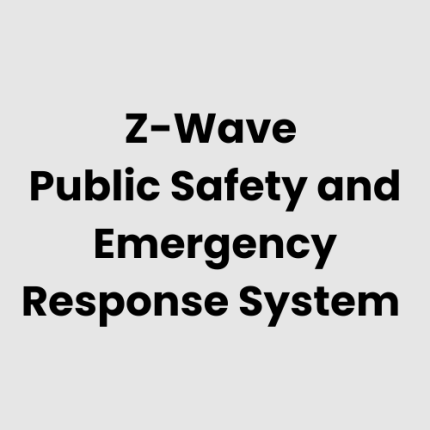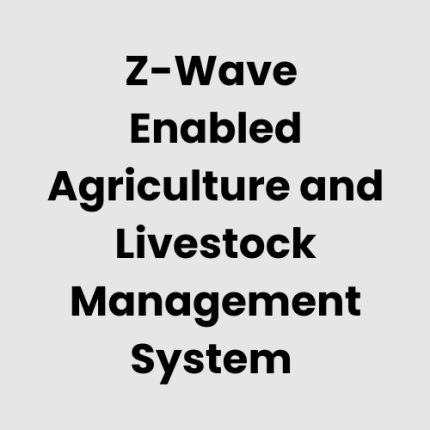Description
Technical Architecture of Z-Wave Enabled Oil and Gas IoT System
The architecture integrates Z-Wave-enabled sensors and devices across upstream, midstream, and downstream operations. A distributed network captures real-time data on pipeline integrity, equipment performance, and environmental conditions. Edge devices process local data, while gateways transmit critical metrics to on-premises servers or cloud platforms for analysis and decision-making. GAO Tek ensures seamless connectivity and robust cybersecurity measures, supporting operational excellence.
List of Hardware of Z-Wave Enabled Oil and Gas IoT System
- Sensors: Pressure, temperature, flow, vibration, and gas leak sensors.
- Z-Wave Gateways: For network connectivity and data transmission.
- Edge Computing Devices: For on-site data processing.
- Actuators: For remote control of valves and pumps.
- Cameras: For real-time visual monitoring.
- Wearables: For worker safety monitoring.
- Smart Meters: For energy and resource tracking.
- Repeaters: To extend network range in challenging environments.
- Backup Power Supplies: To ensure uninterrupted operations.
Physical Placement Considerations of the Hardware
- Sensors and Actuators: Should be installed on critical points such as pipelines, valves, and pumps.
- Gateways: Positioned in central locations for optimal communication coverage.
- Edge Devices: Located near high-priority equipment to reduce latency.
- Cameras: Installed at strategic points for comprehensive field-of-view monitoring.
- Repeaters: Placed to counteract signal interference from metal structures or harsh conditions.
- Wearables: Distributed to field workers to ensure continuous safety monitoring.
Hardware Architecture of Z-Wave Enabled Oil and Gas IoT System
The system comprises interconnected Z-Wave devices forming a mesh network. Sensors and wearables communicate with local gateways, which connect to edge devices or central servers for initial data processing. The architecture also includes redundant paths to ensure fault-tolerant operations, with a focus on scalability to handle growing operational demands.
Deployment Considerations of Z-Wave Enabled Oil and Gas IoT System
- Scalability: Ensure the network can support expanding operations.
- Reliability: Implement redundant pathways and power supplies to maintain system uptime.
- Environment: Use ruggedized devices for extreme weather and hazardous conditions.
- Compliance: Align with industry standards and regulations to ensure safety and legal adherence.
- Security: Employ encryption and authentication to protect against cyber threats.
List of Relevant Industry Standards and Regulations
- API (American Petroleum Institute) Standards
- IEC 61511 (Functional Safety)
- ISO 14224 (Reliability and Maintenance Data)
- OSHA Safety Standards
- CSA Standards for Oil and Gas
- FCC and Industry Canada Regulations for Wireless Devices
- EPA Guidelines for Environmental Safety
Local Server Version of Z-Wave Enabled Oil and Gas IoT System
The local server version leverages on-premises servers to store and process data collected by Z-Wave devices. This configuration offers low latency, improved data privacy, and enhanced control over system operations. GAO Tek provides tailored deployment services to meet site-specific needs while ensuring system robustness and scalability.
Cloud Integration and Data Management
GAO Tek’s Z-Wave-enabled solution integrates seamlessly with cloud platforms to enable remote monitoring and advanced analytics. Data from multiple sites is aggregated in the cloud for predictive maintenance, trend analysis, and anomaly detection. Built-in security measures ensure encrypted data transmission and storage. The system also supports hybrid deployments, balancing cloud benefits with on-premises capabilities.
GAO Case Studies
USA
- Houston, Texas
A large oil refinery integrated a Z-Wave enabled IoT system to monitor pipeline pressure and prevent hazardous leaks. The system facilitated real-time monitoring and automatic valve adjustments, ensuring safe and efficient operations across thousands of miles of pipeline. - Dallas, Texas
In this metropolitan area, a Z-Wave system was deployed to optimize energy consumption in an oil processing facility. Smart meters and sensors allowed for remote monitoring and automated controls, significantly reducing energy waste and operational costs. - Los Angeles, California
A major oil and gas operator in Los Angeles implemented Z-Wave technology for real-time asset monitoring and predictive maintenance. Sensors tracked equipment health and immediately alerted maintenance teams when anomalies were detected, reducing downtime and extending equipment lifespan. - Denver, Colorado
A mining and drilling company based in Denver used Z-Wave-enabled IoT devices to monitor environmental conditions. The system tracked air quality, temperature, and humidity, ensuring safe working conditions for personnel while maintaining regulatory compliance. - Chicago, Illinois
A Z-Wave IoT system was deployed at a Chicago-based oil field to monitor and control the flow of natural gas. The system optimized pressure control and leak detection, leading to improved resource management and enhanced safety measures in high-risk areas. - Pittsburgh, Pennsylvania
In Pittsburgh, Z-Wave technology was employed to manage inventory and storage of fuel. Sensors provided real-time data on fuel levels, ensuring timely refueling and helping avoid overstocking, which led to cost savings and more efficient inventory management. - New York, New York
A petroleum refinery in New York leveraged Z-Wave sensors and smart meters to monitor water usage and energy consumption. By automating these systems, the company achieved a significant reduction in resource waste and operational inefficiencies. - Phoenix, Arizona
Z-Wave-enabled technology was deployed at a large desert-based drilling site to monitor and manage water recycling systems. Sensors tracked the water’s quality and flow, ensuring compliance with environmental regulations and reducing the need for external water sources. - Miami, Florida
A large oil logistics provider in Miami implemented a Z-Wave system for fleet management. GPS and real-time monitoring devices tracked the location and condition of trucks transporting oil, ensuring secure and timely deliveries while optimizing fleet routes. - Seattle, Washington
Z-Wave-enabled sensors were installed at a refinery in Seattle to monitor storage tanks for potential leaks and structural integrity issues. The system ensured swift detection and response, preventing costly environmental incidents and downtime. - Baltimore, Maryland
An oil and gas company in Baltimore integrated a Z-Wave IoT system for environmental monitoring. The system continuously tracked hazardous gas emissions, ensuring the company met compliance standards while safeguarding worker health and safety. - Salt Lake City, Utah
Z-Wave devices were implemented in an oil extraction facility to enhance worker safety by monitoring hazardous conditions, such as the presence of flammable gases. The system provided real-time alerts to personnel and enabled swift evacuations in case of emergencies. - San Francisco, California
A California-based refinery incorporated Z-Wave IoT technology to optimize its water treatment systems. Automated monitoring and control of filtration processes led to significant reductions in water usage, increasing operational efficiency and lowering environmental impact. - Las Vegas, Nevada
In the Nevada oil fields, a Z-Wave system was installed to monitor and manage equipment performance. The real-time data collected by the system helped in preventing costly failures by enabling predictive maintenance and proactive repairs.
- Anchorage, Alaska
A major oil exploration company in Alaska utilized Z-Wave sensors to track equipment performance in remote and harsh environments. The system provided critical data, helping the company mitigate risks and improve operational resilience in adverse weather conditions.
Canada
- Calgary, Alberta
In Calgary, a Z-Wave-enabled IoT system was implemented in an oil sands extraction facility to monitor critical equipment and ensure optimal operational performance. Sensors tracked temperature, pressure, and vibrations, alerting maintenance teams before major failures occurred. - Vancouver, British Columbia
A Vancouver-based oil and gas company adopted a Z-Wave solution to monitor water treatment and waste disposal systems. The technology provided real-time insights into operational efficiency and environmental safety, ensuring compliance with local regulations.
At GAO Tek Inc., we are proud to be at the forefront of advanced technologies in the oil and gas sector. As one of the top 10 suppliers of B2B and B2G solutions globally, we offer tailored IoT systems that leverage cutting-edge Z-Wave technology to improve operational efficiency, safety, and compliance in the oil and gas industry. Our deep expertise, combined with a robust support system, ensures seamless integration and optimal performance for our clients in both the U.S. and Canada.
Navigation Menu for Z-Wave
- Z- Wave Gateways/Hubs
- Z-Wave End Devices
- Z-Wave-Cloud, Server, PC& Mobile System
- Z-Wave Accessories
- Z-Wave Resources
Navigation Menu for IoT
Our products are in stock and can be shipped anywhere in the continental U.S. or Canada from our local warehouse. For any further information, please fill out this form or email us.
We are actively looking for partners who are like us located in the U.S. and Canada. For more information on partnering with GAO, please visit Partner with GAO Tek Inc. It lists various ways to partner with GAO, such as OEM Partnerships, Technology Integration, Distribution and Reselling Opportunities, Presenting at the Leading Event Tek Summit, Joint R&D Projects, Training and Consulting Services, Industry-Specific Collaborations, Research and Academic Partnerships.



